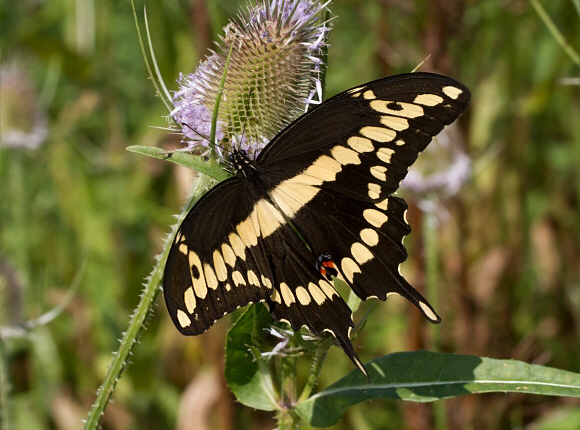
Introduction
The Papilionidae is comprised of about 600 known species. They are found throughout the world in almost every environment including deserts, mountains, grasslands, tropical rainforests, temperate woodlands, meadows, marshes and coastal dunes.
There are 3 subfamilies. The Parnassiinae consists of about 50 species. They are known as Apollos and breed mainly in mountainous areas of the northern hemisphere. The Papilioninae comprises of about 550 species distributed across the world, and includes the Swallowtails and Dragontails, and the giant Birdwings of south-east Asia. The other subfamily Baroniinae consists of a single species Baronia brevicornis which is endemic to the mountains of western Mexico.
Heraclides comprises of 28 species, and is the neotropical ‘sister’ genus of the Holarctic Papilio, to which the European Swallowtail Papilio machaon, and the North American Black Swallowtail Papilio polyxenes belong. Some of the Heraclides species are marked with cream spots and bands, and have obvious affinities with their Holarctic counterparts. Others including anchisiades and isodorus are black with pink patches on the hindwings and are superficially similar to Parides and Eurytides.
Heraclides cresphontes is extremely similar in appearance to H. thoas, – the 2 species can only be distinguished by close examination of the abdominal tip. Their distribution differs, with thoas being distributed from Mexico to Bolivia and Argentina ( and as a rare stray in the southern USA ); while H. cresphontes has a more northerly distribution being found from Canada to Venezuela.
Habitats
This species is found in many different habitats including deciduous forest, flowery meadows and suburban gardens.
Lifecycle
The egg is orange-brown and globular. It is laid singly on the upperside of leaves of Zanthoxylum, Ptelea, Helietta and other Rutaceae. For most of its life the larva is olive-brown in colour, marked with blotches of yellowish-white, and has a slimy appearance. It rests in a prominent position on the upper surface of a leaf, and strongly resembles a bird-dropping. If molested the larva everts a pair of fleshy orange tentacle-like organs from behind its head. This ‘osmaterium’ is waved aggressively, exuding airborne chemicals to deter attacks from insects or reptiles. In the final instar the larva changes it’s appearance, and rests on twigs instead of on leaves. Its final skin is marbled in shades of dark and light grey, and has a matt texture disguising it as a bit of lichen covered twig. The pupa is similarly coloured, and is formed on a twig of the foodplant.
Adult behaviour
Both sexes commonly visit flowers, favouring Carduus, Cirsium and Lantana. When nectaring at flowers the forewings are constantly fluttered – a feature common to most Papilioninae wherever in the world they occur.
